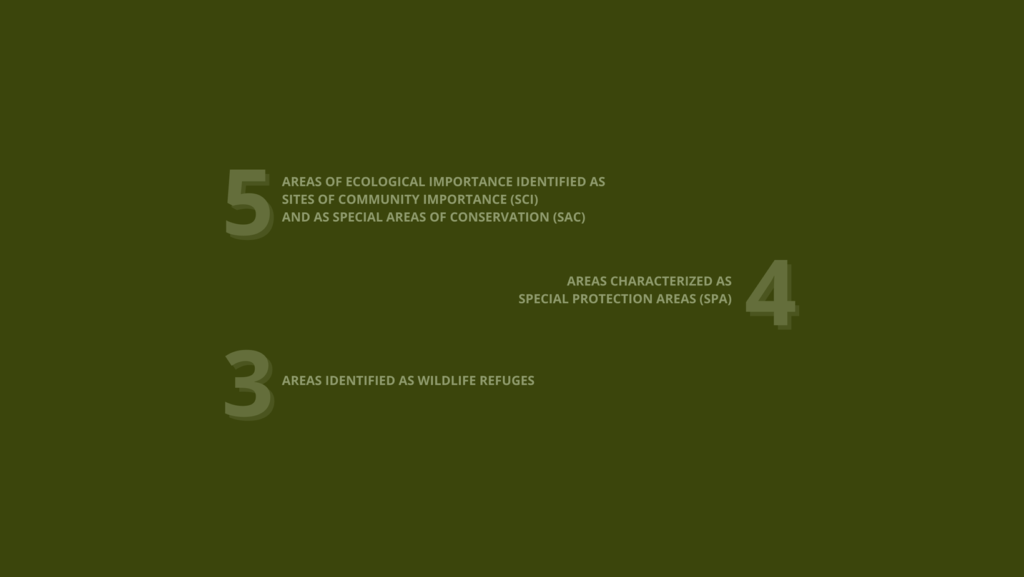The area of the Meteora – Pyli Geopark is characterized by forested mountains and hills with impressive rock formations and monasteries built on their peaks. It is covered by extensive broad-leaved deciduous forests (mainly oak forests), bushy areas, extensive crops, meadows and riparian forests in the valleys, forming a unique mosaic of ecosystems.
This location is one of the most important areas for predators in Greece. The main characteristic of the area is the continued practice of extensive livestock farming and low-intensity primary sector activities. Some of the most characteristic fauna species of the Meteora – Pyli Geopark are the brown bear (Ursus arctos), the grey wolf (Canis lupus), the alpine goat (Rupricapra rupricapra), the Eurasian otter (Lutra lutra), the Egyptian vulture (Neophron percnopterus). All these wild animals live freely in the mountainous areas of the Meteora – Pyli Geopark and are strictly protected by law.
More than 700 species of plants, such as Lilium chalcedonicum, Lilium candidum, etc., grow in the various habitats of the Geopark. The composition and distribution of plant species is influenced by climate, geomorphology and geology. In the clearings between the forests and the alpine fields, various alpine plants and herbs thrive, such as salep, wild mint, tea, oregano, saffron, daffodils and many others. These plants emit a mixture of aromas typical of the mountain regions. Among the rare, endemic or endangered species there are some, such as Seseli parnassicum, Allium parnassicum, Sesleria vaginalis, Allium phthioticum, Barbarea sicula, etc., which are difficult to find, as they either grow in hard-to-reach locations or have a very short flowering period.

NATURA 2000 network areas
The area of Meteora – Pyli includes nine (9) different natural protected areas of the European network NATURA 2000. These areas have been designated either according to the Habitats Directive (92/43/EEC) and are important for the protection of certain habitats and species of plants and animals (Special Areas of Conservation – SAC) or according to the Birds Directive (2009/147/EC) for the protection of certain species of birds (Special Protection Areas for Birds – SPA). One area has both designations. The western part of the Meteora – Pyli Area belongs to the National Park of Tzoumerka – Peristeri and the Arachthos Gorge.
